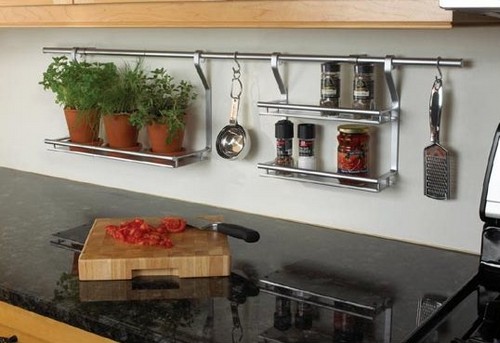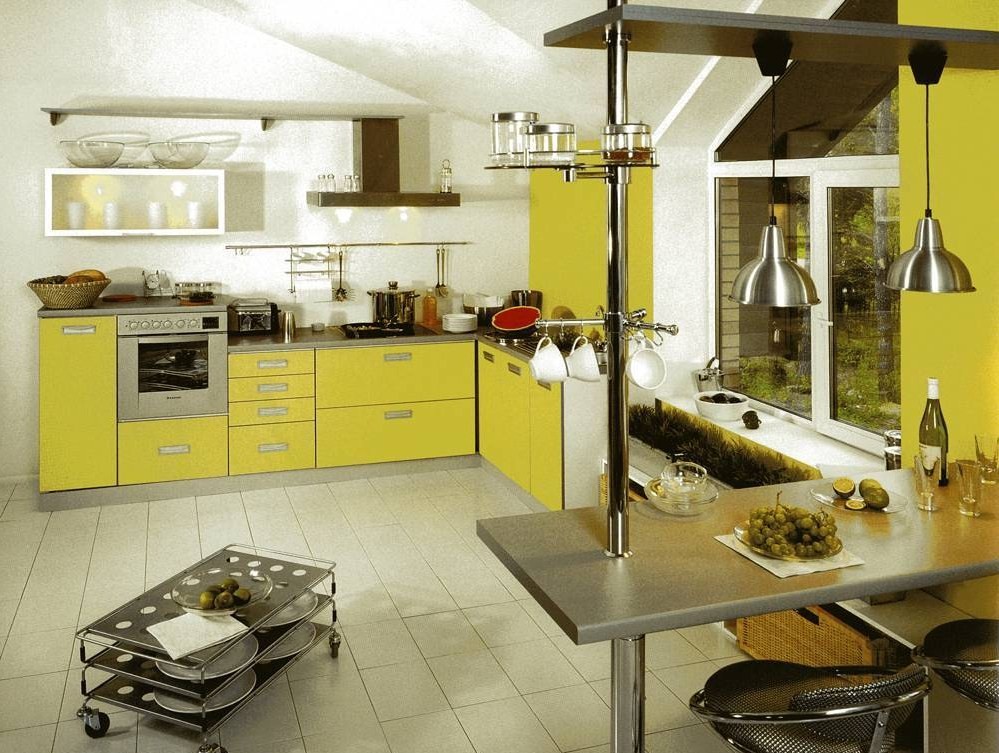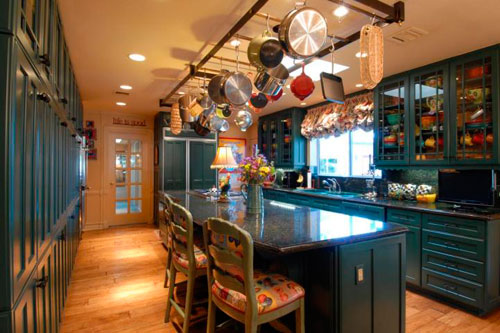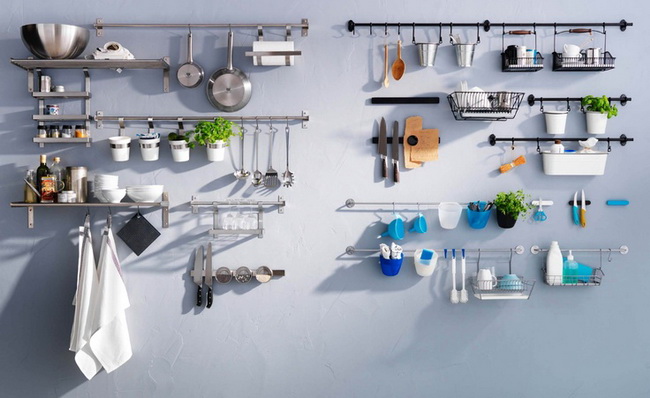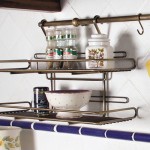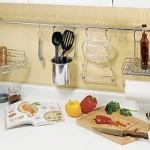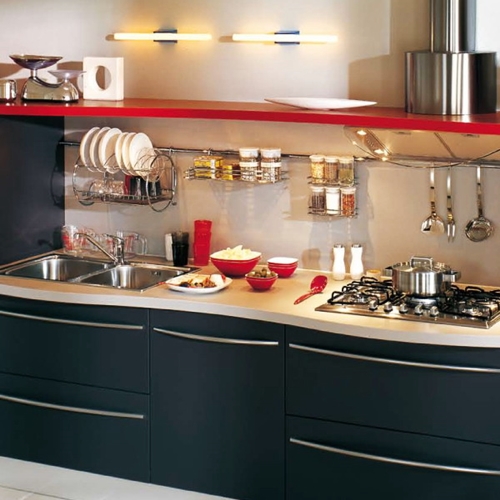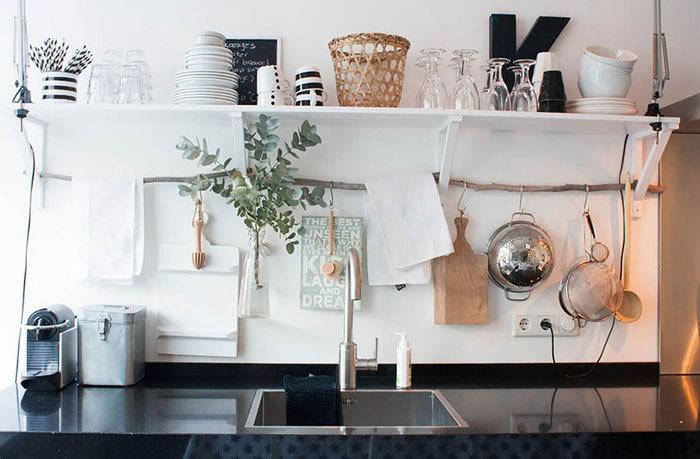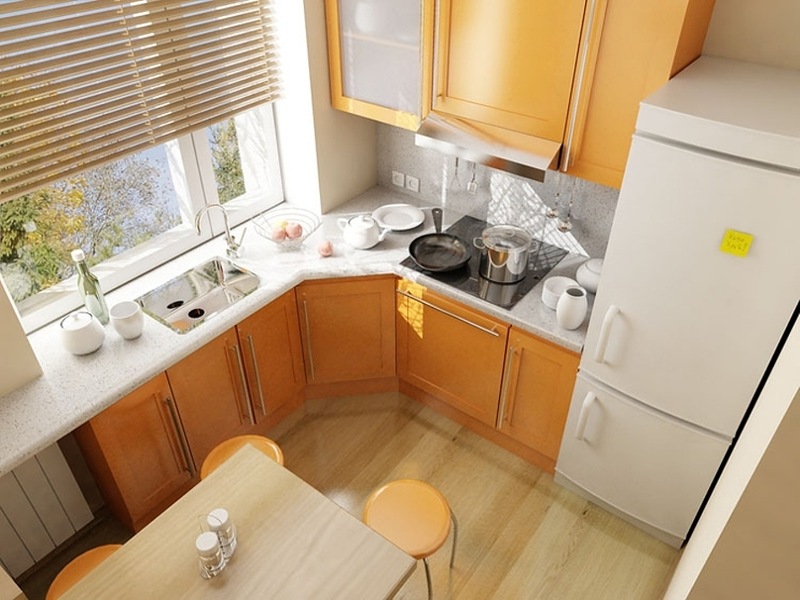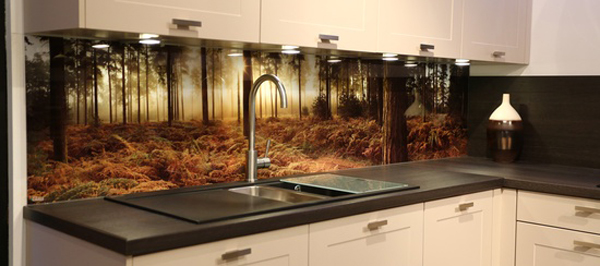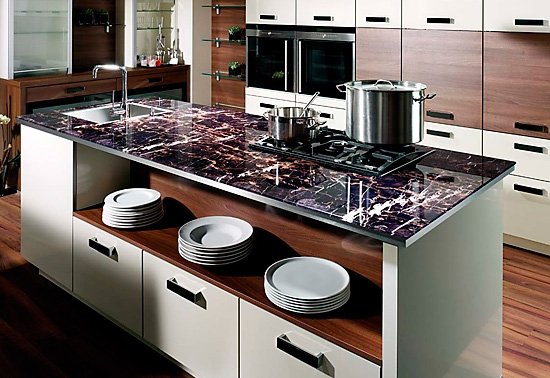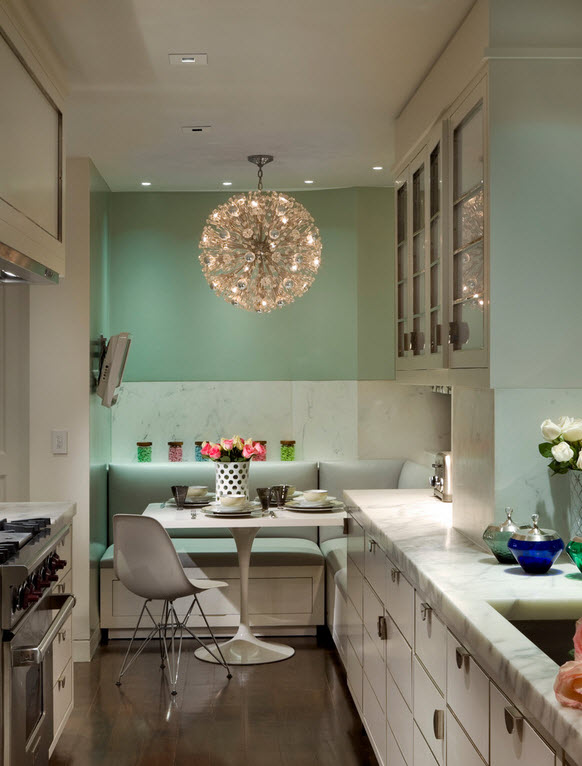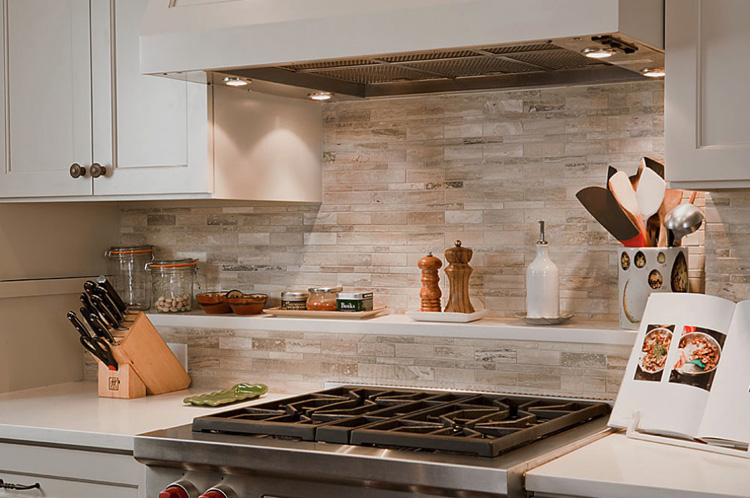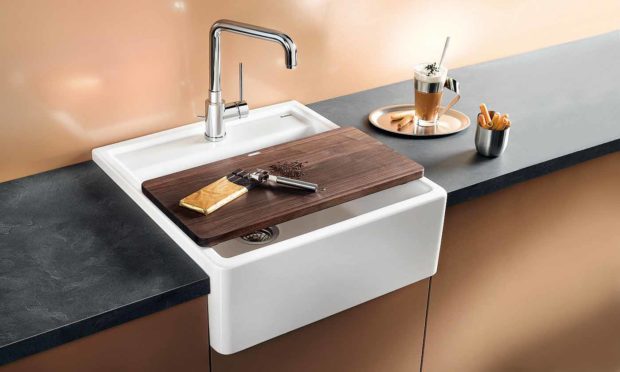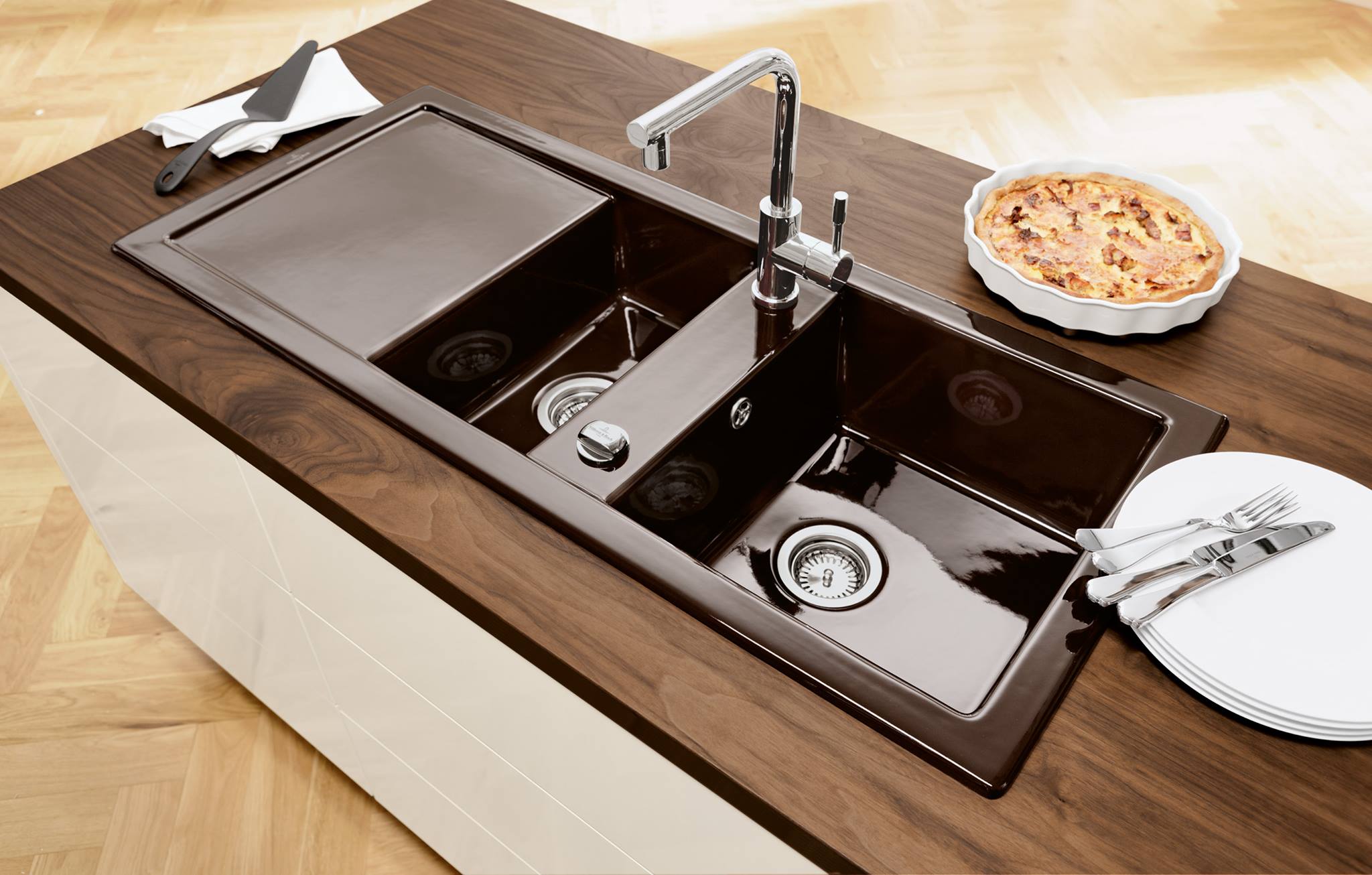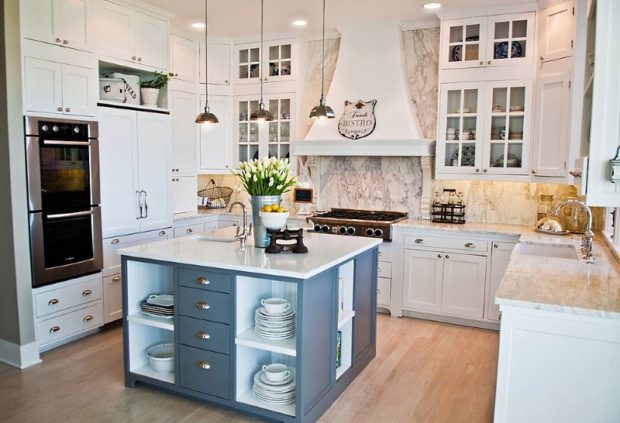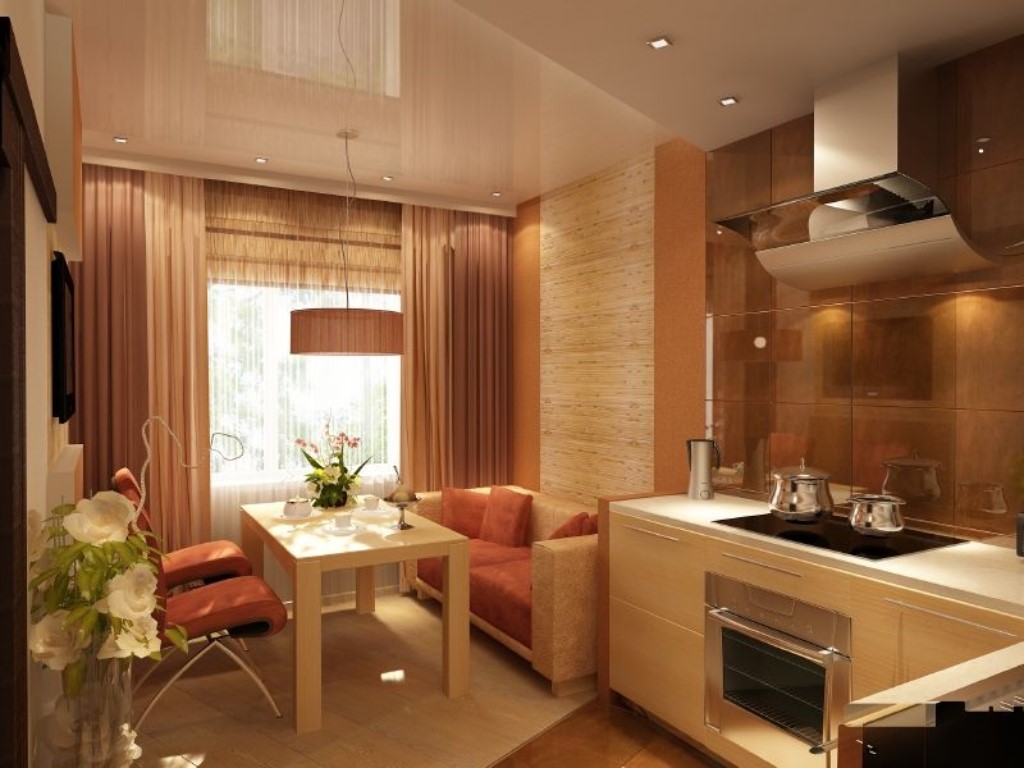Kitchen rails: selection and installation tips
To place small and constantly necessary kitchen utensils on the wall is very convenient, and all the housewives know this. But to replace the primitive nail driven into the wall come more modern fixtures - roof rails. What are they and what kind of railing will fit best into your kitchen?
Under the intricate word "railing" is completely hidden simple construction. This is a metal bar attached to the wall. You can place ladles, colanders, paper towels, pan covers, even oil bottles and other utensils on it, and this is possible thanks to a variety of hinged accessories.
The first rails were used in professional kitchens, but then ordinary housewives appreciated their convenience. Today rails are widely used due to their numerous benefits:
- the ability to install in a kitchen of any size;
- ease of installation and maintenance;
- low price;
- many additional accessories that enhance functionality;
- high structural strength, the ability to withstand large loads.
Reiling can be a real decoration the kitchen, its highlight. It is also worth noting that it can place on itself a sufficient number of necessary items, but it does not take up space, like a cupboardcontaining as many things.
As for accessories, almost any railing can be equipped with numerous hooks, holders for glasses and towels, dryers, mesh shelves. Thus, the metal bar acquires additional functionality, becoming an indispensable element of the kitchen.
Types of Railings
For different cuisines, different types of rails:
- horizontal
- vertical
- outboard.
Horizontal ratings - the most familiar and common. They are fastened either with one solid line along the entire working area of the kitchen, or in several sections, and they can be single or multi-tiered. Such roof rails fit perfectly into any kitchen, often used in small rooms. They are mounted mainly under the kitchen wall cabinets. on distance 5-7 cm from them.
Vertical rails they are not attached to the walls: they are mounted on countertop or stretch from gender before the ceiling. Often such roof rails are used in kitchens where there are bar counters. Shelves and various supports for kitchen utensils are mounted on the crossbars.
Hanging rails already the title tell about their features. They are suspended from the ceiling, but they are used mainly in spacious kitchens, as well as where installed kitchen island.
Materials for railing
The vast majority of rails from metal. Commonly used stainless steel, brass, anodized aluminum, copper. Metal is an ideal material for rails, it is durable, can withstand high loads, but of all the options listed better to choose stainless steel, because it does not lend itself to corrosion and can easily cope with high loads, unlike aluminum, which can bend.
Depending on preferences, the metal can be chrome-plated, made in the color of bronze, gold, copper. In this case, all plugs and accessories are chosen with exactly the same coating.
Where to place railing?
Horizontal rails, as mentioned above, usually have in working area over the countertop at a height of about 40-50 cm from it, and the distance to the hanging kitchen cabinets should be 5-7 cm. Under the horizontal rails you can even take a whole free wall: in this case, the crossbars are in several tiers, and all kitchen utensils on rails become a kind of decor. Often rails are mounted not only in the area of the countertops, but also above stove and over washing.
It must be remembered that under the weight of pots, bottles and other items, the railing can bend, therefore its fastenings are located at a distance of no more than 50 cm from each other. Great option for corner kitchens - railing bent at right angles. Hanging railing can be hung both over the kitchen island and over dining tableif it will fit into the interior.
Accessories for railing
The choice of accessories for railing is very wide:
- hooks. It’s hard to imagine railing without them. On hooks you can hang potholders, covers, dishes and much more, depending on the need;
- shelves necessary for placing spices and bottles on them, household chemicals, sponges, chopping boards;
- mounted drying;
- book holderif you often use cookbooks. With a similar accessory, the book will not take up space on the work surface and get dirty;
- cling film holder with a serrated surface will greatly simplify the process of its use;
- knife holder will be appropriate over the work area;
- holder for covers can be placed near the stove;
- pendant bar or bottle holder useful to all wine lovers. In addition, you can use holders for wine glasses.
When choosing accessories, you must first think about their functionality, but you should not forget about the appearance. Properly selected railing and accessories to it will make the kitchen not only comfortable, but also cozy, because it is a kind of decor.
Reiling and cuisine style
Naturally, each element of the kitchen space should be in harmony with the general style of the kitchen and with other objects in it. Reiling is no exception, so when choosing it, you should think carefully, which railing fits into space as well as possible specific kitchen, and whether it fits at all. Exist such interiorsthat can only be spoiled by such a design. it Japanese and minimalist cuisines, because they require the use of a minimum of objects so that the maximum space remains free.
In other cases, it is worth exploring the features of the chosen style and determining which railing fits perfectly into it. So, for retro or classic kitchens Gold-plated roof rails and carved details are great. For style hi-tech and techno Simple chromed metal rods will do, but they must not be overloaded with various accessories and objects. Rails fit perfectly into the style country and provence: in this case, they can be decorated with tacks and napkins in a cage or flower, wooden spoons, jars of spices.
What else needs to be considered when choosing a railing?
Manufacturers have prepared a lot of different rails and accessories for kitchens of any size and configuration. Given the features of the room, you can choose the most suitable railing.
- If small kitchen, the abundance of objects hung on the railing can create a sense of disorder. In this case, it is better to place only the most necessary things on it: potholders, shoulder blades and spices, for example.
- If the kitchen is spacious, then you can use the long railing, which will look especially advantageous where, instead of hanging cabinets, a shelf system is used. In this case, it will be possible to place on it all those objects that usually stand on the work surface, freeing it.
- For kitchens with corner sink You can use a special element that is attached to the railing and becomes a convenient shelf for household chemicals.
- For a short wall, use tiered rails.
- Before buying a railing, you should think ahead of time which accessories will be needed and which ones will be superfluous.It is important to find a middle ground between the functionality and accuracy of the kitchen space.
Rail installation
Installing railing in the kitchen is quite simple. It is attached to almost any material, with the exception of aprons made of glass.
First thing you need locate mounts: Mark them with a level and a pencil. Their number directly depends on the length of the railing: for 50-90 cm, two fasteners will be enough, and if the railing is more than a meter in length, it is better to provide three support points, etc. In general, for safety, it is advised to support the railing with a wall mount every 50 cm.
Now necessary make holes in designated places. You can use drillif an apron tiledthen it is best to use a diamond coated drill. When the holes are ready, plastic dowels are mounted in them, the screws are inserted into the bushings and into the prepared dowels.
Next stage - mounting railing holders. This is a part with two holes: one is for railing, the second is for the sleeve. You need to install the holder on the sleeve and secure it with screws. In prepared holders install railing itself, trying to ensure that its ends are symmetrically located relative to the holders themselves. The railing is also fastened with screws. Now it’s small: it remains install decorative caps. They are forgotten in railing with a wooden handle of a hammer, so as not to damage the coating. After installing the selected accessories, the railing is ready for use.
In conclusion
Reiling is a convenient and attractive addition to modern cuisine. With its help, you can organize the storage of a mass of things, and at the same time turn the design into a nice piece of decor. It is only important to determine the type of railing, its size and the attached accessories. It all depends on the features of the kitchen, the existing interior and the requirements of the owners.

